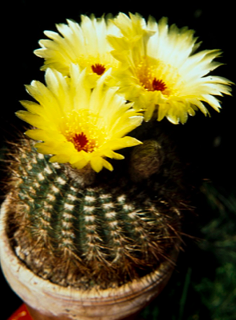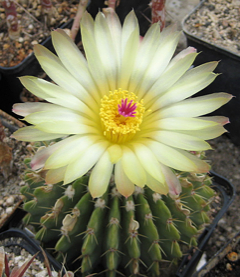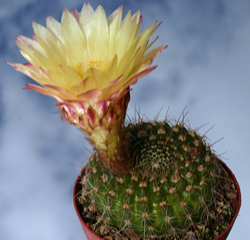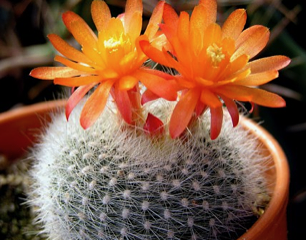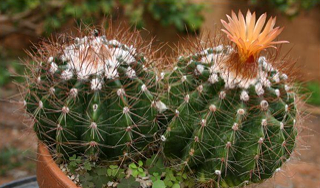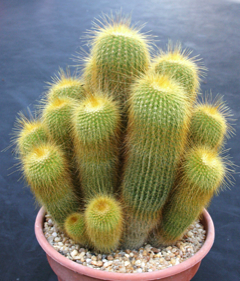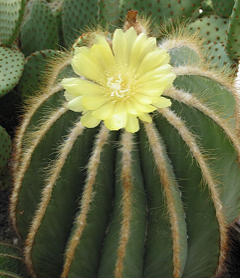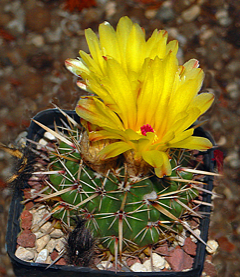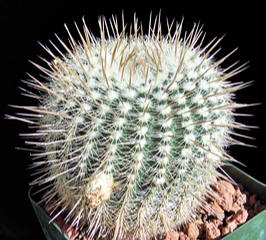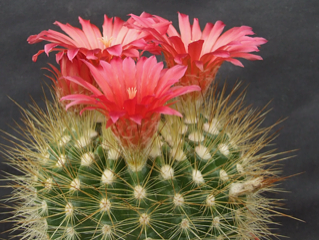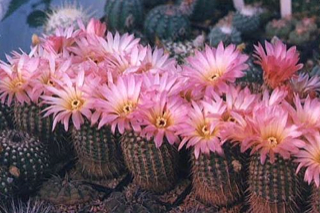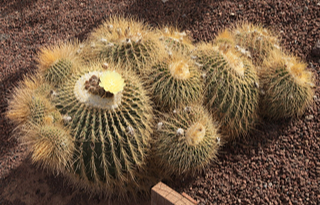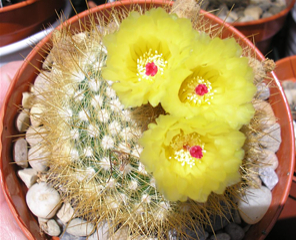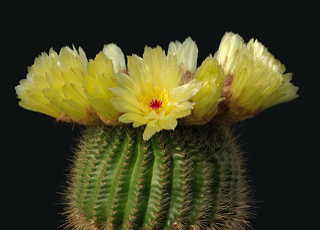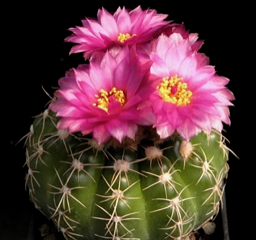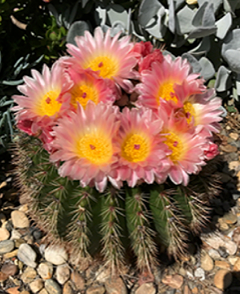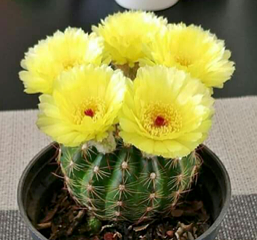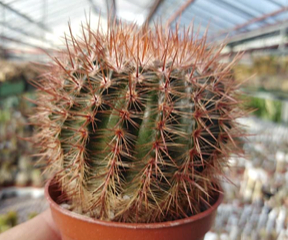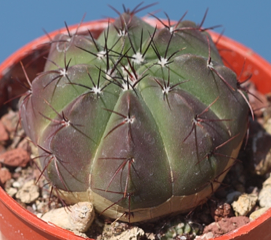Submitted by: Jim Tanner
Parodia is a genus of flowering plants in the cactus family Cactaceae, native to the uplands of Argentina, Peru, Bolivia, Brazil, Colombia and Uruguay. This genus has about 50 species, many of which have been transferred from Eriocactus, Notocactus and Wigginsia. They range from small globose plants to 1 m (3 ft) tall columnar cacti. All are deeply ribbed and spiny, with single flowers at or near the crown. Some species produce offsets at the base. They are popular in cultivation, but must be grown indoors where temperatures fall below 10 °C (50 °F).
The genus is named after Domingo Parodi, one of the early investigators of the flora of Paraguay.
The genus Notocactus is now synonymous with Parodia, and in modern references, all Notocacti have been moved into Parodia. The number of species has also been greatly reduced. The original distinguishing characteristic was the red stigmas in the flowers of Notocactus, and the yellow stigma in those of Parodia. The distinguishing characteristic between the two genera evolved over time, eventually becoming a minor difference in the attachment of the seed to ovary. Parodia has swept up several other genera, and is likely to grow and swallow a few more as botanical and genetic studies continue.
Nonetheless, the two are separate in many seed catalogs, in older reference books, in our shows, and in most of our collections.
Notocactus are South American Cacti, with the center of the genus in Brazil and Argentina, but with members throughout the Eastern side of the Andes. All are easy to grow, growing freely in the spring through the fall, and going more or less dormant in the fall. Some will flower in mid winter, and given their native environment, most do better given a little water year around. If watering Notocactus in the winter, avoid fertilization or weak growth may result. Some of the more tropical species need protection from colder weather to prevent scarring, but most will take normal Southern California winters without protection.
All the species are easy to grow from seed. Seed is available for nearly all the species and from many localities. Fresh seed germinates readily and can grow to a show quality plant in just a few years. Vegetative propagation of the clustering types is easy as well. Cuttings taken during the late spring and early summer root readily and show new growth before the season is over.
Tom Glavich
LATIN LOOKUP – Loquerisne Latine (Do you speak Latin)?
The meanings of latin plant names on this page – from http://davesgarden.com/guides/botanary/
- buiningii [byoon-ING-ee-eye]
Named for Albert Frederik Henrik Buining, 20th century prominent Dutch expert of Brazilian cacti. - concinna [kon-kin-na, kon-sin-na]
From the Latin, meaning skillfuly joined; neat, well-made. - haselbergii [has-el-BERG-ee-eye]
Named for Dr. F. von Haselberg, its discoverer. - herteri [HER-ter-ee]
Named for Professor Wilhelm Guillermo Herter, 20th century German botanist and cactus collector in Uruguay. - horstii [HORST-ee-eye]
Named for Leopoldo Horst, 21st century Brazilian plant collector. - leninghausii [len-ing-HOW-see-eye]
For 19th century German cactus collector Guillermo Leninghaus. - magnifica [mag-NIH-fee-kuh]
Magnificent. - mammulosa [mam-uh-LO-sa]
Having nipples. - Notocactus [no-to-KAK-tus]
From the Greek notos (south) and kaktos (cactus), referring to the plant’s native habitat in South America. - ottonis [o-TOE-nis]
named for German botanist Christoph Friedrich Otto (1783-1856). - Parodia [par-ROH-dee-uh]
Named for Lorenzo Raimundo Parodi, 20th century Argentinian botanist who specialized in native grasses. - penicillata [pen-iss-sil-LAY-tuh]
Having a tuft of hair, very finely divided or pinnate. - roseoluteus [roh-see-oh-LOO-tee-us]
Rose-yellow, referring to the bi-colored flowers. - rutilans [ROO-til-lanz]
Reddish. - schumanniana [shoo-mahn-ee-AH-na]
Named for Dr. Karl Moritz Schumann, 19th century German botanist, and founder of the German Cactus Society. - tabularis [tab-yoo-LAIR-iss]
Flat; of or from Table Mountain in South Africa. - werneri [WER-ner-ee]
Named for Abraham Gottlob Werner, 18th century German geologist.
